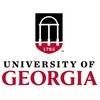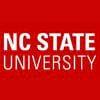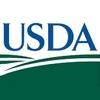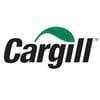Characterizing the Effect of Campylobacter jejuni Challenge on Growth Performance, Cecal Microbiota, and Cecal Short-Chain Fatty Acid Concentrations in Broilers
Simple Summary: Campylobacter jejuni (C. jejuni) is the most common cause of bacterial gastroenteritis in humans worldwide. Poultry and poultry products serve as major reservoirs for this bacterium. In poultry, C. jejuni colonizes the ceca of broilers with a high load without compromising the bird’s growth. Understanding the interaction between the host and the microbe is essential for the development of innovative strategies to control C. jejuni in poultry. The objective of this study was to understand the impact of C. jejuni on bird growth, cecal microbiota, and cecal short-chain fatty acid concentration. Throughout our study, C. jejuni did not impact the bird’s performance. However, the C. jejuni challenge led to a decrease in the number of observed bacteria compared to the control group. At the species level, the C. jejuni challenge decreased the relative abundance of beneficial bacteria, such as Sellimonas intestinalis, and increased the relative abundance of Faecalibacterium sp002160895 compared to the control group. Despite the changes in the microbial composition, the C. jejuni challenge did not change the microbial function or the concentration of short fatty acids in the ceca compared to the control group. In conclusion, C. jejuni infection in broilers can alter the microbial composition without compromising the bird’s performance.
Abstract: This study aimed to understand the effect of C. jejuni challenge on the cecal microbiota and short-chain fatty acid (SCFA) concentration to form a better understanding of the host–pathogen interaction. Sixty broilers were randomly allocated into two treatments: control and challenge. Each treatment was replicated in six pens with five birds per pen. On day 21, birds in the challenge group were orally gavaged with 1 × 108 C. jejuni/mL, while the control group was mock challenged with PBS. The C. jejuni challenge had no effect on body weight, feed intake, and feed conversion ratio compared to the control group. On day 28, the C. jejuni challenge decreased the observed features and Shannon index compared to the control group. On the species level, the C. jejuni challenge decreased (p = 0.02) the relative abundance of Sellimonas intestinalis on day 28 and increased (p = 0.04) the relative abundance of Faecalibacterium sp002160895 on day 35 compared to the control group. The C. jejuni challenge did not change the microbial function and the cecal concentrations of SCFA on days 28 and 35 compared to the control group. In conclusion, C. jejuni might alter the gut microbiota’s composition and diversity without significantly compromising broilers’ growth.
Keywords: Campylobacter jejuni; gut microbiota; broiler
1. Introduction
2. Materials and Methods
2.1. Birds and Experimental Setup

2.2. C. jejuni Challenge Preparation
2.3. Cecal Sample Collection and DNA Extraction
2.4. DNA Sequencing and Bioinformatics Analysis
2.5. Short-Chain Fatty Acid Analysis
2.6. Statistical Analysis
3. Results and Discussion
3.1. Performance Parameters

3.2. Microbial Diversity


3.3. Bacterial Diversity at the Phylum Level

3.4. Bacterial Diversity at the Genera and Species Level






4. Conclusions
1. Kaakoush, N.O.; Castaño-Rodríguez, N.; Mitchell, H.M.; Man, S.M. Global epidemiology of Campylobacter infection. Clin. Microbiol. Rev. 2015, 28, 687–720. [CrossRef] [PubMed]
2. Ben Romdhane, R.; Merle, R. The data behind risk analysis of Campylobacter jejuni and Campylobacter coli infections. In Fighting Campylobacter Infections: Towards a One Health Approach; Springer: Berlin/Heidelberg, Germany, 2021; pp. 25–58.
3. Hoffmann, S.A.; Maculloch, B.; Batz, M. Economic Burden of Major Foodborne Illnesses Acquired in the United States; United States Department of Agriculture: Washington, DC, USA, 2015.
4. Oh, E.; McMullen, L.; Jeon, B. High prevalence of hyper-aerotolerant Campylobacter jejuni in retail poultry with potential implication in human infection. Front. Microbiol. 2015, 6, 1263. [CrossRef] [PubMed]
5. Olvera-Ramírez, A.M.; McEwan, N.R.; Stanley, K.; Nava-Diaz, R.; Aguilar-Tipacamú, G. A Systematic Review on the Role of Wildlife as Carriers and Spreaders of Campylobacter spp. Animals 2023, 13, 1334. [CrossRef] [PubMed]
6. Cawthraw, S.; Newell, D. Investigation of the presence and protective effects of maternal antibodies against Campylobacter jejuni in chickens. Avian Dis. 2010, 54, 86–93. [CrossRef]
7. Skarp, C.; Hänninen, M.-L.; Rautelin, H. Campylobacteriosis: The role of poultry meat. Clin. Microbiol. Infect. 2016, 22, 103–109. [CrossRef]
8. Pielsticker, C.; Glünder, G.; Rautenschlein, S. Colonization properties of Campylobacter jejuni in chickens. Eur. J. Microbiol. Immunol. 2012, 2, 61–65. [CrossRef]
9. Gruntar, I.; Biasizzo, M.; Kušar, D.; Pate, M.; Ocepek, M. Campylobacter jejuni contamination of broiler carcasses: Population dynamics and genetic profiles at slaughterhouse level. Food Microbiol. 2015, 50, 97–101. [CrossRef]
10. Laban, S.E.; Khalefa, H.S. Impact of Microbial Load of Slaughterhouse Environment on the Degree of Broiler Chicken Carcass Contamination, with a Focus on Campylobacter Prevalence. J. Adv. Vet. Res. 2023, 13, 1551–1559.
11. Bolton, D.J. Campylobacter virulence and survival factors. Food Microbiol. 2015, 48, 99–108. [CrossRef]
12. Ortega-Sanz, I.; García, M.; Bocigas, C.; Megías, G.; Melero, B.; Rovira, J. Genomic characterization of Campylobacter jejuni associated with perimyocarditis: A family case report. Foodborne Pathog. Dis. 2023, 20, 368–373. [CrossRef]
13. Mortada, M.; Cosby, D.E.; Akerele, G.; Ramadan, N.; Oxford, J.; Shanmugasundaram, R.; Ng, T.T.; Selvaraj, R.K. Characterizing the immune response of chickens to Campylobacter jejuni (Strain A74C). PLoS ONE 2021, 16, e0247080. [CrossRef]
14. Looft, T.; Cai, G.; Choudhury, B.; Lai, L.X.; Lippolis, J.D.; Reinhardt, T.A.; Sylte, M.J.; Casey, T.A. Avian Intestinal Mucus Modulates Campylobacter jejuni Gene Expression in a Host-Specific Manner. Front. Microbiol. 2018, 9, 3215. [CrossRef]
15. Alemka, A.; Corcionivoschi, N.; Bourke, B. Defense and adaptation: The complex inter-relationship between Campylobacter jejuni and mucus. Front. Cell. Infect. Microbiol. 2012, 2, 15. [CrossRef]
16. Duangnumsawang, Y.; Zentek, J.; Goodarzi Boroojeni, F. Development and functional properties of intestinal mucus layer in poultry. Front. Immunol. 2021, 12, 745849. [CrossRef]
17. Struwe, W.B.; Gough, R.; Gallagher, M.E.; Kenny, D.T.; Carrington, S.D.; Karlsson, N.G.; Rudd, P.M. Identification of O-glycan Structures from Chicken Intestinal Mucins Provides Insight into Campylobactor jejuni Pathogenicity*[S]. Mol. Cell. Proteom. 2015, 14, 1464–1477. [CrossRef]
18. Munoz, L.R.; Bailey, M.A.; Krehling, J.T.; Bourassa, D.V.; Hauck, R.; Pacheco, W.J.; Chaves-Cordoba, B.; Chasteen, K.S.; Talorico, A.A.; Escobar, C.; et al. Effects of dietary yeast cell wall supplementation on growth performance, intestinal Campylobacter jejuni colonization, innate immune response, villus height, crypt depth, and slaughter characteristics of broiler chickens inoculated with Campylobacter jejuni at d 21. Poult. Sci. 2023, 102, 102609. [CrossRef]
19. Humphrey, S.; Chaloner, G.; Kemmett, K.; Davidson, N.; Williams, N.; Kipar, A.; Humphrey, T.; Wigley, P. Campylobacter jejuni is not merely a commensal in commercial broiler chickens and affects bird welfare. MBio 2014, 5. [CrossRef] [PubMed]
20. Awad, W.A.; Molnár, A.; Aschenbach, J.R.; Ghareeb, K.; Khayal, B.; Hess, C.; Liebhart, D.; Dublecz, K.; Hess, M. Campylobacter infection in chickens modulates the intestinal epithelial barrier function. Innate Immun. 2015, 21, 151–160. [CrossRef] [PubMed]
21. Sweeney, T.; Meredith, H.; Vigors, S.; McDonnell, M.J.; Ryan, M.; Thornton, K.; O’Doherty, J.V. Extracts of laminarin and laminarin/fucoidan from the marine macroalgal species Laminaria digitata improved growth rate and intestinal structure in young chicks, but does not influence Campylobacter jejuni colonisation. Anim. Feed Sci. Technol. 2017, 232, 71–79. [CrossRef]
22. Chagneau, S.; Gaucher, M.-L.; Fravalo, P.; Thériault, W.P.; Thibodeau, A. Intestinal Colonization of Campylobacter jejuni and Its Hepatic Dissemination Are Associated with Local and Systemic Immune Responses in Broiler Chickens. Microorganisms 2023, 11, 1677. [CrossRef] [PubMed]
23. Thibodeau, A.; Fravalo, P.; Yergeau, É.; Arsenault, J.; Lahaye, L.; Letellier, A. Chicken Caecal Microbiome Modifications Induced by Campylobacter jejuni Colonization and by a Non-Antibiotic Feed Additive. PLoS ONE 2015, 10, e0131978. [CrossRef] [PubMed]
24. Sofka, D.; Pfeifer, A.; Gleiß, B.; Paulsen, P.; Hilbert, F. Changes within the intestinal flora of broilers by colonisation with Campylobacter jejuni. Berl. Münch. Tierärztl. Wochensch. 2015, 128, 104–110.
25. Skånseng, B.; Kaldhusdal, M.; Rudi, K. Comparison of chicken gut colonisation by the pathogens Campylobacter jejuni and Clostridium perfringens by real-time quantitative PCR. Mol. Cell. Probes 2006, 20, 269–279. [CrossRef] [PubMed]
26. Callahan, B.J.; Grinevich, D.; Thakur, S.; Balamotis, M.A.; Yehezkel, T.B. Ultra-accurate microbial amplicon sequencing with synthetic long reads. Microbiome 2021, 9, 130. [CrossRef] [PubMed]
27. Walker, M.B.; Holton, M.P.; Callaway, T.R.; Lourenco, J.M.; Fontes, P.L.P. Differences in Microbial Community Composition between Uterine Horns Ipsilateral and Contralateral to the Corpus Luteum in Beef Cows on Day 15 of the Estrous Cycle. Microorganisms 2023, 11, 2117. [CrossRef] [PubMed]
28. Cason, E.; Al Hakeem, W.; Adams, D.; Shanmugasundaram, R.; Selvaraj, R. Effects of synbiotic supplementation as an antibiotic growth promoter replacement on cecal Campylobacter jejuni load in broilers challenged with C. jejuni. J. Appl. Poult. Res. 2023, 32, 100315. [CrossRef]
29. Rothrock, M.J., Jr.; Hiett, K.L.; Gamble, J.; Caudill, A.C.; Cicconi-Hogan, K.M.; Caporaso, J.G. A hybrid DNA extraction method for the qualitative and quantitative assessment of bacterial communities from poultry production samples. JoVE (J. Vis. Exp.) 2014, 94, e52161.
30. Abellan-Schneyder, I.; Siebert, A.; Hofmann, K.; Wenning, M.; Neuhaus, K. Full-Length SSU rRNA Gene Sequencing Allows Species-Level Detection of Bacteria, Archaea, and Yeasts Present in Milk. Microorganisms 2021, 9, 1251. [CrossRef]
31. Bolyen, E.; Rideout, J.R.; Dillon, M.R.; Bokulich, N.A.; Abnet, C.C.; Al-Ghalith, G.A.; Alexander, H.; Alm, E.J.; Arumugam, M.; Asnicar, F. Reproducible, interactive, scalable and extensible microbiome data science using QIIME 2. Nat. Biotechnol. 2019, 37, 852–857. [CrossRef]
32. Callahan, B.J.; McMurdie, P.J.; Rosen, M.J.; Han, A.W.; Johnson, A.J.; Holmes, S.P. DADA2: High resolution sample inference from amplicon data. BioRxiv 2015, 13, 024034. [CrossRef]
33. Price, M.N.; Dehal, P.S.; Arkin, A.P. FastTree 2—Approximately maximum-likelihood trees for large alignments. PLoS ONE 2010, 5, e9490. [CrossRef] [PubMed]
34. Quast, C.; Pruesse, E.; Yilmaz, P.; Gerken, J.; Schweer, T.; Yarza, P.; Peplies, J.; Glöckner, F.O. The SILVA ribosomal RNA gene database project: Improved data processing and web-based tools. Nucleic Acids Res. 2012, 41, D590–D596. [CrossRef] [PubMed]
35. Pedregosa, F.; Varoquaux, G.; Gramfort, A.; Michel, V.; Thirion, B.; Grisel, O.; Blondel, M.; Prettenhofer, P.; Weiss, R.; Dubourg, V. Scikit-learn: Machine learning in Python. J. Mach. Learn. Res. 2011, 12, 2825–2830.
36. Douglas, G.M.; Maffei, V.J.; Zaneveld, J.R.; Yurgel, S.N.; Brown, J.R.; Taylor, C.M.; Huttenhower, C.; Langille, M.G. PICRUSt2 for prediction of metagenome functions. Nat. Biotechnol. 2020, 38, 685–688. [CrossRef] [PubMed]
37. Shanmugasundaram, R.; Lourenco, J.; Hakeem, W.A.; Dycus, M.M.; Applegate, T.J. Subclinical doses of dietary fumonisins and deoxynivalenol cause cecal microbiota dysbiosis in broiler chickens challenged with Clostridium perfringens. Front. Microbiol. 2023, 14, 1106604. [CrossRef] [PubMed]
38. Al Hakeem, W.G.; Fathima, S.; Shanmugasundaram, R.; Selvaraj, R.K. Campylobacter jejuni in poultry: Pathogenesis and control strategies. Microorganisms 2022, 10, 2134. [CrossRef] [PubMed]
39. Tang, Y.; Jiang, Q.; Tang, H.; Wang, Z.; Yin, Y.; Ren, F.; Kong, L.; Jiao, X.; Huang, J. Characterization and prevalence of Campylobacter spp. from broiler chicken rearing period to the slaughtering process in Eastern China. Front. Vet. Sci. 2020, 7, 227. [CrossRef]
40. Sahin, O.; Zhang, Q.; Meitzler, J.C.; Harr, B.S.; Morishita, T.Y.; Mohan, R. Prevalence, antigenic specificity, and bactericidal activity of poultry anti-Campylobacter maternal antibodies. Appl. Environ. Microbiol. 2001, 67, 3951–3957. [CrossRef]
41. Gharib, N.K.; Rahimi, S.; Khaki, P. Comparison of the effects of probiotic, organic acid and medicinal plant on Campylobacter jejuni challenged broiler chickens. J. Agr. Sci. Tech. 2012, 14, 1485–1496.
42. Al Hakeem, W.G.; Acevedo Villanueva, K.Y.; Selvaraj, R.K. The Development of Gut Microbiota and Its Changes Following C. jejuni Infection in Broilers. Vaccines 2023, 11, 595.
43. Indikova, I.; Humphrey, T.J.; Hilbert, F. Survival with a helping hand: Campylobacter and microbiota. Front. Microbiol. 2015, 6, 1266. [CrossRef]
44. Sciuto, K.; Moro, I. Cyanobacteria: The bright and dark sides of a charming group. Biodivers. Conserv. 2015, 24, 711–738. [CrossRef]
45. Codd, G.A.; Morrison, L.F.; Metcalf, J.S. Cyanobacterial toxins: Risk management for health protection. Toxicol. Appl. Pharmacol. 2005, 203, 264–272. [CrossRef] [PubMed]
46. Liu, W.-C.; Huang, M.-Y.; Balasubramanian, B.; Jha, R. Heat stress affects jejunal immunity of Yellow-Feathered broilers and is potentially mediated by the microbiome. Front. Physiol. 2022, 13, 1022. [CrossRef] [PubMed]
47. Hermans, D.; Pasmans, F.; Heyndrickx, M.; Van Immerseel, F.; Martel, A.; Van Deun, K.; Haesebrouck, F. A tolerogenic mucosal immune response leads to persistent Campylobacter jejuni colonization in the chicken gut. Crit. Rev. Microbiol. 2012, 38, 17–29. [CrossRef] [PubMed]
48. Hao, L.; Michaelsen, T.Y.; Singleton, C.M.; Dottorini, G.; Kirkegaard, R.H.; Albertsen, M.; Nielsen, P.H.; Dueholm, M.S. Novel syntrophic bacteria in full-scale anaerobic digesters revealed by genome-centric metatranscriptomics. ISME J. 2020, 14, 906–918. [CrossRef] [PubMed]
49. Barton, L.L.; Ritz, N.L.; Fauque, G.D.; Lin, H.C. Sulfur cycling and the intestinal microbiome. Dig. Dis. Sci. 2017, 62, 2241–2257. [CrossRef] [PubMed]
50. Stahl, M.; Friis, L.M.; Nothaft, H.; Liu, X.; Li, J.; Szymanski, C.M.; Stintzi, A. L-fucose utilization provides Campylobacter jejuni with a competitive advantage. Proc. Natl. Acad. Sci. USA 2011, 108, 7194–7199. [CrossRef] [PubMed]
51. Gilroy, R.; Ravi, A.; Getino, M.; Pursley, I.; Horton, D.L.; Alikhan, N.-F.; Baker, D.; Gharbi, K.; Hall, N.; Watson, M. Extensive microbial diversity within the chicken gut microbiome revealed by metagenomics and culture. PeerJ 2021, 9, e10941. [CrossRef]
52. Leylabadlo, H.E.; Ghotaslou, R.; Feizabadi, M.M.; Farajnia, S.; Moaddab, S.Y.; Ganbarov, K.; Khodadadi, E.; Tanomand, A.; Sheykhsaran, E.; Yousefi, B. The critical role of Faecalibacterium prausnitzii in human health: An overview. Microb. Pathog. 2020, 149, 104344. [CrossRef]
53. Auger, S.; Kropp, C.; Borras-Nogues, E.; Chanput, W.; Andre-Leroux, G.; Gitton-Quent, O.; Benevides, L.; Breyner, N.; Azevedo, V.; Langella, P. Intraspecific diversity of microbial anti-inflammatory molecule (MAM) from Faecalibacterium prausnitzii. Int. J. Mol. Sci. 2022, 23, 1705. [CrossRef]
54. Muñoz, M.; Guerrero-Araya, E.; Cortés-Tapia, C.; Plaza-Garrido, A.; Lawley, T.D.; Paredes-Sabja, D. Comprehensive genome analyses of Sellimonas intestinalis, a potential biomarker of homeostasis gut recovery. Microb. Genom. 2020, 6. [CrossRef]
55. Luethy, P.M.; Huynh, S.; Ribardo, D.A.; Winter, S.E.; Parker, C.T.; Hendrixson, D.R. Microbiota-Derived Short-Chain Fatty Acids Modulate Expression of Campylobacter jejuni Determinants Required for Commensalism and Virulence. mBio 2017, 8. [CrossRef]
56. Stahl, M.; Butcher, J.; Stintzi, A. Nutrient acquisition and metabolism by Campylobacter jejuni. Front. Cell. Infect. Microbiol. 2012, 2, 5. [CrossRef]





















